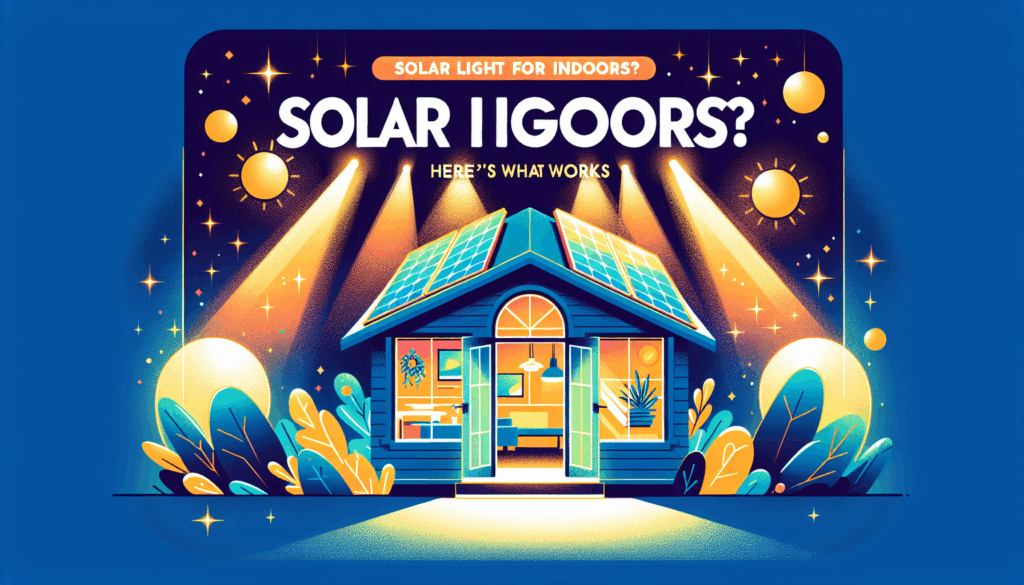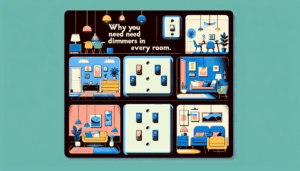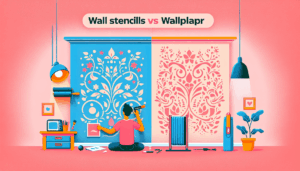In recent years, the push for sustainable energy solutions has gained significant momentum, leading to innovative products that not only help reduce energy bills but also minimize carbon footprints. One such innovation is solar lighting. While most people associate solar lights with outdoor use—like garden lights, path lights, and security lamps—there is a growing interest in using solar lights indoors. But can solar lights really work effectively indoors? In this blog, we’ll explore the capabilities of solar lights for indoor use and highlight what works best.

Understanding Solar Lights
At its core, solar lighting utilizes photovoltaic cells to convert sunlight into electricity. This energy is stored in batteries, which then power the lights when the sun goes down. The traditional applications for solar lights have primarily been outdoor settings, where they can harness ample sunlight during the day. However, the indoor environment presents unique challenges, particularly in terms of sunlight availability.
Why Consider Solar Lights Indoors?
1. Energy Efficiency: Solar lights can significantly reduce your electricity bills. By harnessing solar energy, you can light up your home without relying entirely on grid electricity. This is particularly useful in areas with high energy costs.
2. Eco-Friendly: Using solar power reduces the reliance on fossil fuels, making it an environmentally friendly choice. Solar lights emit no greenhouse gases, contributing to a cleaner planet.
3. Versatility and Aesthetics: Solar lights come in various designs and styles, making them suitable for diverse interior decor themes. Whether it’s a modern LED design or a vintage lantern, there’s a solar solution for everyone.
Challenges of Using Solar Lights Indoors
While the benefits are compelling, there are several challenges associated with using solar lights indoors:
1. Limited Sunlight: Indoor spaces often lack direct sunlight, which is essential for solar panels to charge effectively. Rooms with small windows or those that are shaded throughout the day may not provide enough energy.
2. Battery Limitations: The batteries in solar lights can only store a limited amount of energy. If the lights are used in a high-demand situation or during extended periods without sunlight, they may not perform as expected.
3. Aesthetic Integration: Finding a way to integrate solar lights into your interior design can be tricky. They typically require a solar panel to be placed in a well-lit area, which may not always blend seamlessly with your decor.
What Works for Indoor Solar Lighting
Despite the challenges, some types of solar lights can work effectively indoors. Here are a few options to consider:
1. Solar-Powered LED Bulbs
One of the most effective ways to use solar power indoors is by opting for solar-powered LED bulbs. These bulbs can be charged during the day by a small solar panel placed near a window. They are energy-efficient and can provide bright light for several hours after sunset.
Tip: Look for LED bulbs with built-in batteries to maximize their indoor effectiveness. Ensure that the solar panel receives adequate sunlight during the day.
2. Solar Lanterns
Solar lanterns are a stylish alternative for indoor lighting. They can be placed on tables or shelves and add a warm ambiance to the space. Many solar lanterns come with a detachable solar panel, allowing you to position the panel in a sunny spot while placing the lantern itself wherever you prefer.
Tip: Choose lanterns with a decorative design to enhance your indoor decor while benefitting from solar energy.
3. Solar Fairy Lights
For those looking to add a whimsical touch to their indoor spaces, solar fairy lights are an excellent choice. These string lights can be used to illuminate areas like patios, bedrooms, or living rooms. By placing the solar panel outside during the day, you can enjoy enchanting lighting indoors at night.
Tip: Use solar fairy lights to highlight architectural features, artwork, or indoor plants for an inviting atmosphere.
4. Solar-Powered Motion Sensor Lights
Indoor solar-powered motion sensor lights can be a practical solution for areas requiring occasional illumination, such as hallways, bathrooms, or garages. These lights can be placed near windows to charge and will automatically turn on when they detect motion.
Tip: Ensure that the solar panel is positioned to receive maximum sunlight, and consider using them in conjunction with other light sources for best results.
Tips for Successful Indoor Solar Lighting
To maximize the effectiveness of solar lights indoors, keep the following tips in mind:
– Choose the Right Location: Position your solar panels where they will receive the most sunlight throughout the day. This might mean placing them on windowsills or near large windows.
– Combine Solar with Traditional Lighting: To ensure that you always have light when you need it, consider using solar lights alongside traditional lighting solutions. This can help bridge the gap during days with limited sunlight.
– Regular Maintenance: Clean the solar panels regularly to ensure they can capture as much sunlight as possible. Dust and dirt can significantly reduce their efficiency.
– Invest in Quality Products: Not all solar lights are created equal. Invest in high-quality products from reputable brands to ensure durability and better performance.
Conclusion
Using solar lights indoors is not only possible but can also be a practical, eco-friendly solution for your lighting needs. By choosing the right products and understanding the limitations of solar technology in indoor spaces, you can enjoy the benefits of solar energy while enhancing your home’s aesthetic appeal. As solar technology continues to advance, we can expect even more innovative solutions that will broaden the possibilities of indoor solar lighting. Whether you’re looking to reduce your energy costs or simply want to embrace sustainable living, indoor solar lights could be your answer.
Make the switch to solar today and illuminate your home with the power of the sun!
AI-Assisted Content Disclaimer
This article was created with AI assistance and reviewed by a human for accuracy and clarity.






Leave a Reply